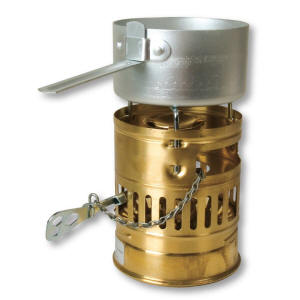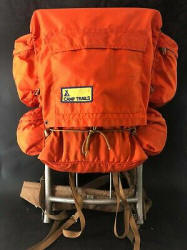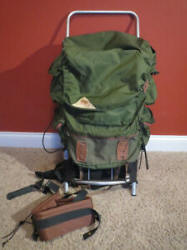Mike's Backpacking Reference |
||||||||||||||||||||||
|
|
|
|||||||||||||||||||||
| Welcome! Gear is a
personal decision that has many good options (and some poor ones).
This site is a reference I created to share what works for me.
I have been backing packing since the early 60's having started with the
Boy Scouts. Gear
continues to improve and I'm the first to admit that keeping up is not
one of my high priorities now. I have backpacked mostly in the
Sierras starting seriously in the late 1960's. I enjoy hiking solo
and found Colin Fletcher's
Complete Walker a great guide. While the gear listed in the
book is dated (1984 is the last edition) the philosophy is good.
The majority of my camping has been in the Sierras of California above 9,000' so my gear choices tend to reflect this. I typically hike on and off trails. While I used to be a 4 season hiker, camping in the snow has lost its appeal as I have gotten older... Bedroom | Kitchen
| Clothing | Other Gear
| Fishing | Photography
| Navigation History (very optional!)I did my first pack trip in the early 1960s with Troop 28 in Sonoma County (California). My gear included:
I recall while we heated beans on a fire the Scoutmaster fried himself a steak... However this never dampened my enthusiasm for backpacking and camping. What could be better than getting out of town? Later in high school I started backpacking in the Sierras near Yosemite NP. Gear was cobbled together from hand-me-downs and thrift stores when possible. I wore wool shirts and pants. Early sources for gear were limited. REI was a mail order place. For younger readers this meant getting a paper catalog and snail mailing a order form and check. The Ski Hut in Berkeley was one of the few places to shop for gear. They carried climbing, telemark, and backpacking gear. Berkley also had Sierra Designs and North Face factory store. Starting in the later 60's small manufactures emerged such as Black Forest Enterprises (Nevada City), Alpine Products (Sacramento), MEI (Fresno). Other outdoor stores opened and gear became easier to access. Some of my first trips were to places above Tuolumne Meadows. I started with a used Camp Trails frame pack. I originally used a Gerry butane stove or a Bluet stove. Since butane didn't work in colder weather I purchased a Seva 123 (climbers stove). This was a great 4 season stove and always had a comforting roar. I broke the Camp Trails frame on a cross-country adventure (repaired in the field with a branch and Swiss army knife and used the rest of the season). I was given an old Kelty frame pack with a single pocket sack. I liked the Kelty. About 1972 I bought a Kelty Tioga which has external pockets. This was a great pack and I kept it going with replacement parts as things wore out. I made a thin pocket that fit behind my head for maps. In the middle 80s I doing a cross-country in Kings Canyon Park and had occasion to climb a number of chutes. My buddy had no problem with his internal frame Gregory, but my trusty Kelty external frame pack had to be hauled. The next season I bought an MEI internal frame pack. This was a great pack, but I missed the pockets of my Kelty. A few years later I purchased a Kelty Internal frame pack with external pockets. Somewhere in the 80's I transitioned to MSR stoves and pots. These were my mainstays for the next 20 years. Heated well, easily maintained in the field. I used both stainless steel and "blacklight" aluminum pots.
|
||||||||||||||||||||||


